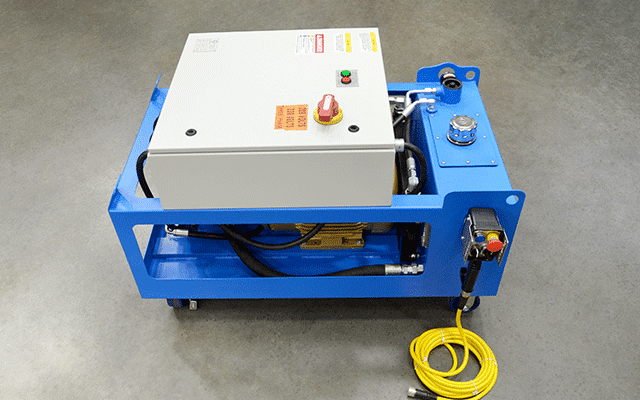Some nonprofit hospitals shirk community investment obligation

Picture: SDI Productions/Getty Images
The greater part of nonprofit hospitals are failing to adhere to via on anticipated charity commitments, in spite of the generous tax breaks they obtain, in accordance to a report from the Lown Institute.
The result of this neglect is $17 billion in unrealized community expenditure, in accordance to the analysis from the wellbeing care feel tank, which examined three,641 hospitals based mostly on their Medicaid revenue, charity care investing, and other investments that have immediate benefit to the community–like wellbeing clinics, housing, and food stuff stability.
Just about three-quarters (seventy two%) are not investing their reasonable share, which means they have a reasonable share deficit, investing less on charity care and community expenditure than they obtain in tax breaks, in accordance to the report.
Deficits variety from a couple of thousand dollars to $261 million, with Cleveland Clinic main the list of individuals with reasonable share deficits.
Even among the hospitals in the identical metropolis, the place tax rates, community requirements, and percentages of uninsured clients are equivalent, effectiveness diverse extensively.
This was the situation in Boston, the place Lown uncovered Boston Healthcare Center had a reasonable share surplus of $11 million, but Massachusetts General Clinic had a community benefit investing deficit of $179 million.
“The most important motive that hospitals have not invested their reasonable share is that they will not have to,” Dr. Vikas Saini, president of the Lown Institute, told Healthcare Finance News. “And there’s no true auditing of the investing documented.”
He claimed that whilst the IRS demands hospitals to spend on community benefit, it does not specify what kind, for what objective or how much.
“So, if hospitals can obtain a massive tax break no subject what they spend, it helps make sense that many would decide on to just spend the bare least,” Saini claimed.
WHY THIS Matters
In trade for the tax exemption, there is an understanding that the hospitals ought to be furnishing advantages to their neighborhood communities.
Saini claimed this neglect has turn into a major offer as non-earnings hospitals have evolved into major businesses that handle a trillion dollars of the financial state.
“That indicates there are a ton of taxes that have not been gathered and that would have compensated for much more universities, safer streets and so on,” he claimed. “For reduced-money people, having entry to economical help can be the change amongst heading into health care personal debt, or not. Persons may also decide on to hold off or go without the need of care that they seriously will need.”
Saini noted community wellbeing expenditure can also aid tackle social determinants of wellbeing that are upstream, so that folks will not get unwell in the initially area.
Several hospitals do tackle the social determinants of wellbeing for better individual results and to decrease the price of much more pricey care in the unexpected emergency area or clinic stays. In this way, money used on SDOH produces a return on expenditure.
For instance, Montefiore Overall health System in the Bronx tackled the social determinants by investing in housing, a shift that slice down on unexpected emergency area visits and avoidable hospitalizations for an annual 300% return on expenditure.
The Lown Report detailed the 50 hospitals in the place that are investing the most in community wellbeing. Five in the leading ten are in the metropolitan area in and around New York Town.
Foremost the rankings of community wellbeing traders are Paradise Valley Clinic in California, Elmhurst Clinic Center in New York, Queens Clinic Center in New York, Metropolitan Clinic Center in New York, Woodhull Healthcare and Psychological Overall health Center in New York, Leonard J. Chabert Healthcare Center in Louisiana, and NYC Overall health + Hospitals Coney Island in New York, Lallie Kemp Healthcare Center in Louisiana, Zuckerberg San Francisco General Clinic and Trauma Center in California and College Clinic in New Jersey.
THE Larger sized Trend
Saini claimed whilst the COVID pandemic laid bare the many inequities in our technique, it was recognized that even just before the pandemic folks have been having difficulties to afford to pay for care and have been deferring or delaying care.
The enterprise product of hospitals, (and certainly much of healthcare) prospects them to seek out large-margin support traces and leaves a ton of expenditure in the matters that can reduce hospitalization, unfunded, in accordance to Saini. This indicates that the load of ailment will have a tendency to grow in a vicious cycle.
“Transparency is an crucial initially stage, so that communities can keep their neighborhood hospitals accountable. Which is why we produced this metric,” he claimed. “But we also will need much more regulation from the IRS and from states.”
Saini pointed to states like Oregon, which has produced community benefit investing minimums for every clinic, and Massachusetts, which produced much more particular reporting specifications that tie community benefit investing to particular neighborhood wellbeing requirements.
ON THE File
“Hospitals say they want to be great community companions, and the types at the leading of our list have adopted via,” Saini claimed by assertion. “With the pandemic shining a gentle on wellbeing inequity in The us, we will need much more hospitals to give back again as much as they choose in tax breaks.”
Twitter: @dropdeaded209
Email the writer: [email protected]







